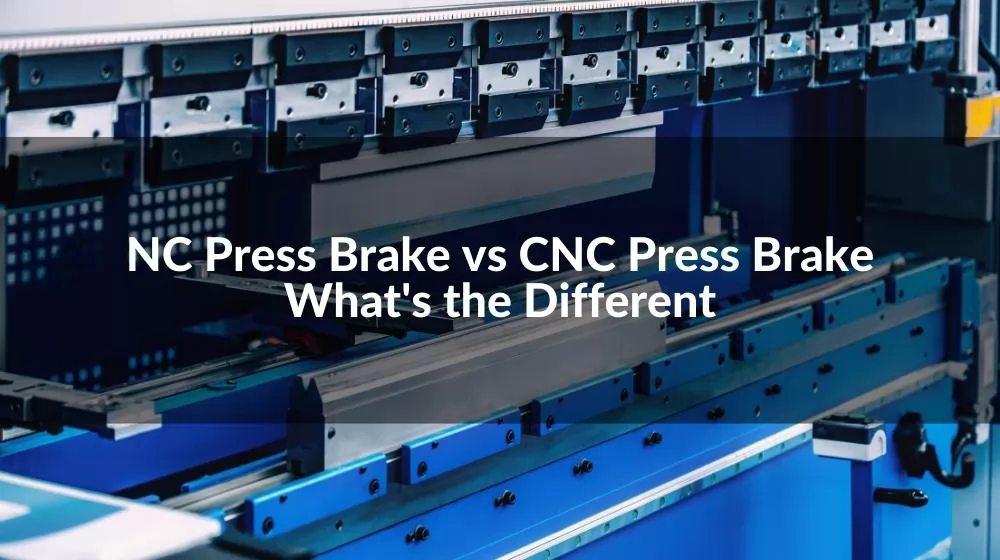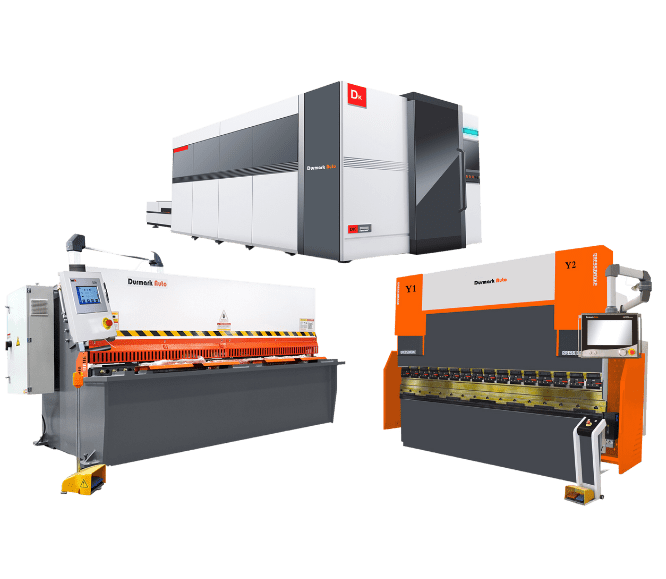
Request a Quote

Request a Quote


With the continuous improvement of industrial automation, more and more manufacturers will choose to purchase automated sheet metal equipment, as are NC press brakes and CNC press brakes.
A press brake is a machine for metal bending and forming, which drives punches and dies through different driving sources.
Therefore, the mold can repeatedly bend the metal sheet many times to form the profile. Press brakes apply tonnage in different ways to materials of different thicknesses and lengths.
The NC press brake is a press brake with an early digital control system, and the CNC press brake is a hydraulic press brake equipped with a CNC control system.
CNC is more convenient to control and easier to change settings than NC.
The CNC control system controls the movement of each part, with modular programming function and high precision. The operator can set parameters through the control system, such as bending angle, plate thickness, flange length, cycle time, stress, etc.
The CNC press brake is also equipped with an automatic feeding system. The movement of the ram and backgauge precisely controls the position of the workpiece. The drive shaft of the back gauge motor moves synchronously with the ball screw. The back gauge can accurately measure the length of the flange being formed. The bending angle is adjusted by adjusting the movement of the ram through the control system.
NC press brakes can usually only control X and Y axes, but for CNC press brakes, it can control at least 3+1 axes. Other options can be 4+1 axis, 5+1 axis, 6+1 axis, 7+1 axis, 8+1 axis, etc. These can bend more complex products.
The design principles of the two models are different, resulting in different structures to ensure synchronization on both sides of the curved slider. The NC press brake uses the torsion shaft to connect the left and right pendulum rods into a torsion shaft, forcing the synchronizing mechanism to move the oil cylinders on both sides up and down. Therefore, the torsion axis synchronous press brake is a mechanical forced synchronization method, which cannot automatically check and automatically adjust the parallelism of the slider.
CNC press brakes are equipped with magnetic (optical) rulers on the slide and siding. The numerical control system can analyze the synchronization situation on both sides of the slider through the feedback information of the magnetic (optical) ruler at any time. If there is an error, the numerical control system will adjust it through the proportional electro-hydraulic servo valve to synchronize the strokes on both sides of the slider. The CNC system, hydraulic control valve group and magnetic ruler constitute the feedback closed-loop control of CNC press brake
The parallelism of the slider determines the angle of the workpiece. The NC press brake is the mechanism that keeps the slides in sync. Without real-time error feedback, the machine itself cannot make automatic adjustments. In addition, its eccentric load capacity is poor (the CNC press brake uses the torsion shaft to force the synchronous mechanism to move the oil cylinders on both sides up and down, if the long-term eccentric load will lead to the deformation of the torsion shaft)
The CNC press brake system controls the synchronization of the sliders through the proportional electro-hydraulic valve group, and the magnetic (optical) scale feedbacks real-time errors. If there is an error, the system uses the magnetic (optical) scale feedback to maintain the synchronization of the sliders.
There are two points that determine the running speed of the machine: (1) the speed of the slider, (2) the speed of the back gauge, (3) the bending step
The cylinder of the CNC press brake is 6:1 or 8:1, which is slow, while the cylinder of the CNC press brake is 13:1 or 15:1, which is fast. Therefore, the rapid descending speed and return speed of the CNC press brake are much higher than those of the CNC press brake.
Since the NC press brake is not equipped with a control system and has no V-axis compensation, it can only rely on the experience of old workers to perform trial bending when processing according to drawings. If it doesn't meet the criteria, you have to keep trying. and requires considerable labor.
CNC press brake adopts professional numerical control system control, V-axis compensation, simple operation, and low requirements for workers' experience. There is a function of simulating bending, no need to stake out, only need to modify the size of the input step size of the drawing, and bend directly.
Due to its own design, the NC press brake will not bend under unbalanced loads. If it is bent under unbalanced load for a long time, it will cause deformation of the torsion shaft.
CNC press brakes do not have such problems. The left and right sides of the Y1 and Y2 axes run independently and can be eccentrically folded.
Read More:
What is a Shearing Machine? Working Principle and Application
Top 10 Press Brake Machine Manufacturers in 2022
China Top 10 Hydraulic Press Manufacturers 2022
.png)



